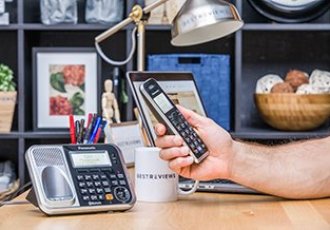We recommend these products based on an intensive research process that's designed to cut through the noise and find the top products in this space. Guided by experts, we spend hours looking into the factors that matter, to bring you these selections.

Ready to buy now? Shop the best:
Accuracy is important, especially when dealing with money. It doesn't have to be large sums, just a large amount of bills. Whether you have a cash-based business, your school is hosting a fundraiser, or you work at a bank, a bill counter can be an invaluable machine that provides accurate counts in an instant.
If you've never purchased a bill counter before, the task might seem a little daunting. However, learning exactly which features you need to consider, such as speed, hopper size, counterfeit detection, and portability, will help you make a selection. Once you know what those features are, you can buy with confidence.

Finding the best bill counter means finding the one with the features you need most. The following are the most important aspects to consider before making your final decision.
If you need to count a large number of bills, then counting speed will be an important consideration for you. Some of the smaller portable models count 600 bills per minute, while the higher-end models can count nearly 2,000 bills per minute. Most bill counters count approximately 1,000 bills per minute.
The hopper is where you load the bills for counting. Some of the low-end models may only hold about 100 bills, while the higher-end models can hold up to 500. The larger the hopper capacity, the fewer interruptions you’ll have while counting. Additionally, hoppers may be located in the front, the back, or, in some instances, on the top of the bill counter. Most require a neat stack of bills to be placed on edge. Larger-capacity hoppers that allow you to load bills flat tend to be a little more forgiving when it comes to neatness, enabling you to work more quickly.
Most bill counters require you to presort your bills before putting them in the machine. In other words, you can’t just feed a stack of mixed bills into the machine to get a breakdown of how many fives, tens, or twenties there are. Higher-end bill counters have this feature. If it’s something you need, be prepared to pay a bit more.
Bill counters work at very high speeds and can run the risk of overheating. Many are designed to work for a designated amount of time before needing to cool off, while some can run continuously. Because of the high volume of bills that can be counted in a minute, overheating won’t be an issue for most users. If you anticipate the need to count bills for many hours at a time, it would be smart to purchase a model that can run indefinitely.
Counterfeit detection: Even moderately priced bill counters come with the technology to detect counterfeit bills. Most have two ways to automatically check. The best machines use three or more methods.
Error detection: When bills are zipping through your counter at 1,000 per minute and there's a problem, such as a counterfeit bill is detected, you want your bill counter to be able to notify you of the error. It’s important to purchase a bill counter that can communicate errors to the user or your counts may not be accurate.
Currency detection: If you have an international business, you need a bill counter that either recognizes foreign currency or allows you to preset values so those bills will be accepted and counted.

The best bill counter is the one that’s accurate and easy to operate. The more complicated the user interface, the greater the chance of user error and the higher the frustration level. You don’t want to get to the end of a long session only to realize you accidentally lumped all the tens and hundreds in the same tally.
When you turn on your bill counter, it’s comforting to know that all the elements are functioning properly. If this is something you desire, look for a bill counter with self-testing capabilities.
If portability is your main concern, look for a small, pocket-size bill counter that can be powered by batteries.
If you don’t have a bill counter, detecting a counterfeit bill can involve tilting the bill to see if the printing looks metallic, holding the bill up to the light to search for a watermark, or striking each bill with a special pen to see if you get a black mark. Bill counters that have counterfeit-detection technology can save you a great deal of time. The following are the three main ways a bill counter checks for counterfeit bills.

Q. How does a bill counter work?
A. There are three steps a bill counter can use when counting bills. The first and most basic step is to simply count the number of bills. The machine rapidly pulls the bills from the hopper (where you place the stack) into the machine. The bills are counted as they pass through a scanner. The second step uses technology such as an ultraviolet or infrared light to aid in counterfeit detection. The third (more advanced and costly) step uses pattern recognition software to determine the type of bills being fed into the bill counter.
Q. How fast does a bill counter count bills?
A. This number varies from manufacturer to manufacturer and model to model. The average bill counter counts around 1,000 bills per minute, which is roughly 17 bills per second.
Q. Do bill counters only count bills?
A. No. It’s possible to purchase a bill counter that counts anything that fits into the hopper. This could be tickets, coupons, cards, or even just paper.
Get emails you’ll love.
Learn about the products you’re wondering if you should buy and get advice on using your latest purchases.
